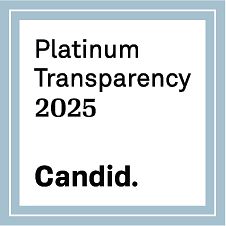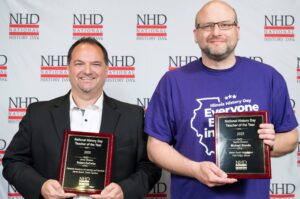Your Guide to
Getting Started
Choose Your Topic
A topic is the part of history you want to study. Choose a topic that is interesting to you, that fits the annual theme, and that is not too big and not too small. Studying the entire American Revolution is probably too big. At the same time, studying one decision made by General George Washington on one day in the Revolutionary War might be too small. Just like Goldilocks, find a topic that is “just right.”
Topic FAQs
Can I select any topic I want?
Absolutely! NHD encourages you to explore historical topics (local, regional, national, or global) from any time period. Start by checking with your teacher. Teachers might have certain guidelines specific to their classrooms. All topics also need to be approved by your parent or guardian.
How old should my topic be?
Your topic must be old enough that historians are writing about it. Historians tend to wait until enough time has passed that the topic feels complete and they can answer the “So What?” question about the topic; i.e., why is the topic important to know about? You will answer the same question about your topic.
If you are interested in something that is happening currently or very recently, consider exploring that topic in history. For example, you might be interested in how people today are coping with a dwindling water supply. Look back to struggles over access to water in the past. You might find a great topic that way!
Start Your Research
Once you select a topic, you are ready to begin your research by finding out what was going on before and during the time that your topic occurred. This is called historical context and it’s where historians begin.
Historians use these and other terms when talking about the study of history. Refer to the Student Glossary as you come across historical terms and concepts.
Historical context sets the stage for your topic. To learn about historical context, historians use two key types of resources: primary and secondary sources. Remember to keep track of your research sources so you can create your bibliography.
Secondary Sources
Secondary sources tell, analyze, or interpret events. Historians create secondary sources based on their reading of primary sources. Secondary sources are usually written decades, if not centuries, after the event occurred by people who did not live through or participate in the event.
Begin your research with secondary sources to help you build your knowledge of the big picture surrounding your topic. To understand the connections between your topic and the time period, ask yourself:
- Why did my topic happen at this particular time and in this particular place?
- What were the events that came before my topic?
- How was my topic influenced by the economic, social, political, and cultural climate of the time period?
Primary Sources
Primary sources are the most exciting part of history. These are the sources created during the time that the event took place. Be sure to look at primary materials created by as many people as you can. Looking at various viewpoints will help you develop multiple perspectives.
Examples of primary sources include: documents, artifacts, historic sites, songs, or other written and tangible items created during the historical period you are studying.
While it can be tempting to jump right to the primary sources, the historical context of your topic that you learn from secondary sources will help you make sense of the primary sources that you find.
Conducting Interviews
Interviews are not required for an NHD project. Requests to interview historians or other secondary sources are inappropriate. Historians do not interview each other. Instead, you might conduct oral history interviews of those who were eyewitnesses to the events. Oral histories are primary sources. Learn more about guidelines for conducting interviews and the difference between oral histories and interviews with experts.
Develop a Historical Argument
NHD projects must do more than just tell a story. Historians create a historical argument to state what they will prove through their writing. The historical argument is a clear and specific two or three-sentence statement that contains the how and why of what historians found in their research.
After you do your research and analyze your sources, your ideas about the significance of your topic in history will take shape. Then it is time for you to develop your historical argument.
Your research provides the evidence to support the argument you wish to make.
Example Topic: Battle of Gettysburg
Historical Argument: The Battle of Gettysburg was a major turning point in the U.S. Civil War. It turned the tide of the war from the South to the North. After the battle, Lee’s army would never fight again on Northern soil and the Union army gained confidence.
Select a Contest Category
NHD offers five creative categories in each division (Junior: grades 6–8, or Senior: grades 9–12). The documentary, exhibit, performance, and website categories offer both individual and group participation options. The paper category allows individual participation only. Groups may include two to five students.
Documentary
A documentary is a ten-minute film that uses media (images, video, and sound) to communicate your historical argument, research evidence, and interpretation of your topic’s significance in history.
A documentary should reflect your ability to use audiovisual equipment to communicate your topic’s significance. The documentary category will help you develop skills in using photographs, film, video, audio, computers, and graphic presentations. Your presentation should include primary source materials and also must be an original production. To produce a documentary, you must have access to equipment and be able to operate it.
Documentary Resources
Exhibit
An exhibit is a three-dimensional physical and visual representation of your historical argument, research evidence, and interpretation of your topic’s significance in history.
Exhibits use color, images, documents, objects, graphics, and design, as well as words, to tell your story. Exhibits can be interactive experiences by asking viewers to play music, look at a video, or open a door or window to see more documents or photos.
Exhibit Resources
Paper
A paper is a written format for presenting your historical argument, research evidence, and interpretation of your topic’s significance in history.
A paper is a highly personal and individual effort, and if you prefer to work alone this may be the category for you. Papers depend almost entirely on words to tell the story, and you can usually include more information in a paper than in some of the other categories. Various types of creative writing (for example, fictional diaries, poems, etc.) are permitted but must conform to all general and category rules.
Paper Resources
Performance
A performance is a dramatic portrayal of your historical argument, research evidence, and interpretation of your topic’s significance in history.
The performance category is the only one that is presented live. Developing a strong narrative that allows your subject to unfold in a dramatic and visually interesting way is important. Memorizing, rehearsing, and refining your script is essential, so you should schedule time for this in addition to research, writing, costuming, and prop gathering.
Performance Resources
Website
A website is a collection of interconnected web pages that uses multimedia to communicate your historical argument, research evidence, and interpretation of your topic’s significance in history.
A website should reflect your ability to use website design software and computer technology to communicate your topic’s significance in history. To create an NHD website project, you must use NHDWebCentral®.
Website Resources
Write Your Process Paper & Annotated Bibliography
All NHD projects have two required elements in common—a process paper and an annotated bibliography.
Process Paper
A process paper is a description of how you conducted your research, developed your topic idea, and created your entry. The process paper must also explain the relationship of your topic to the contest theme. You’ll find these and further information about writing your Process Paper in the Contest Rule Book.
Annotated Bibliography
An annotated bibliography is a formatted list of the sources that you used in your research. The main goals of an annotated bibliography are to:
- Give credit to the original authors, avoiding plagiarism
- Show the value of a source to the research
- Reflect varied perspectives with different types of sources
- Provide the source information so that readers can explore those sources on their own
An annotated bibliography is required for all categories. Read the Contest Rule Book to learn about the detailed requirements.
NoodleTools: NHD and NoodleTools partner together to help you organize your research sources. NoodleTools can help you track your sources, take notes, organize your ideas, and create your annotated bibliography. Your teachers can sign up and receive account access for all of their students for one year. The program allows teachers to see the progress their students have made and offer direct electronic feedback.
Find Your Local Contest
National History Day competition begins at the local level. Registration, contest dates, submission deadlines, and further supporting materials are available through each affiliate’s local contest website.
Project Examples
Get inspired by NHD projects submitted in previous years’ contests.
Create an Entry
Resources to help you start and complete your NHD entry



